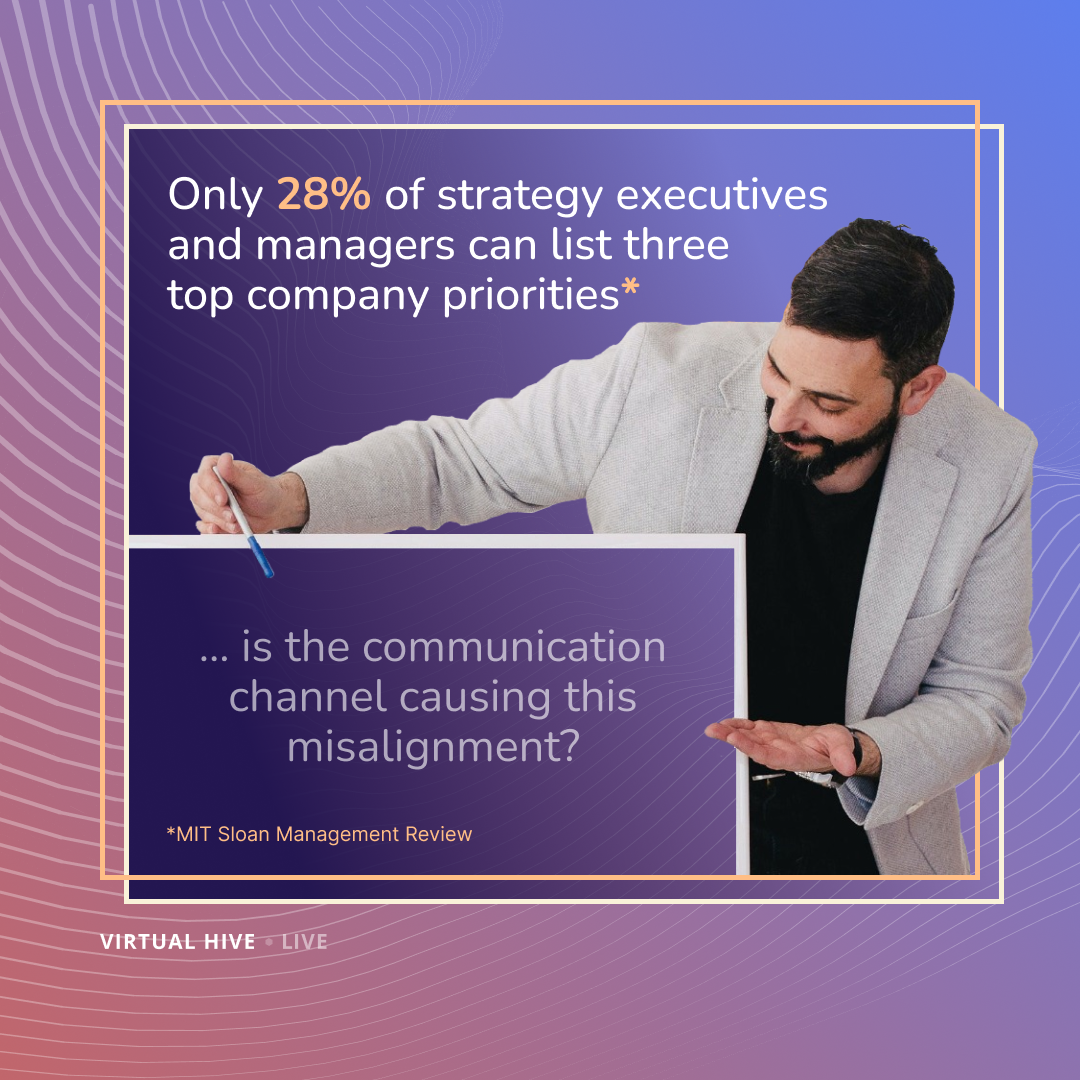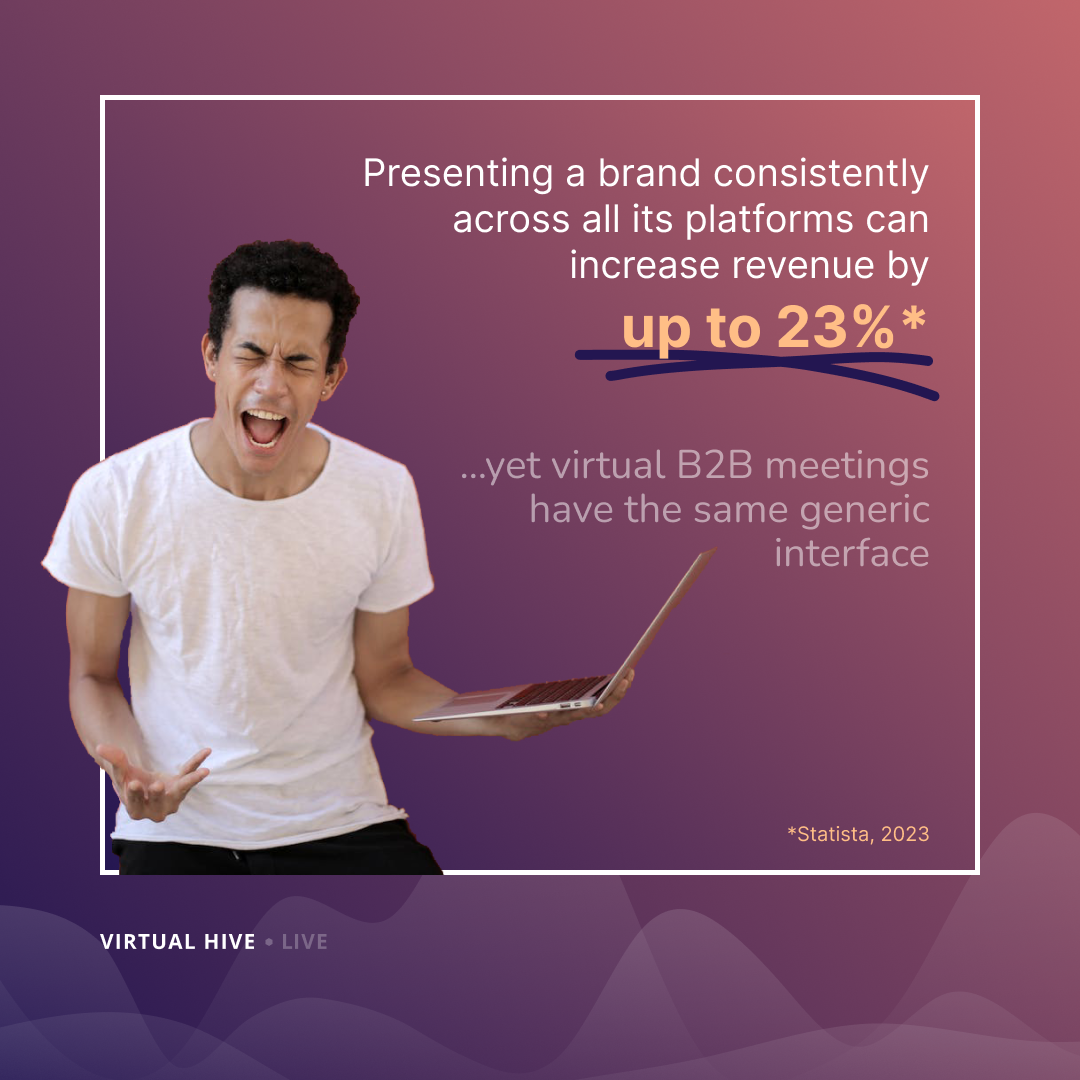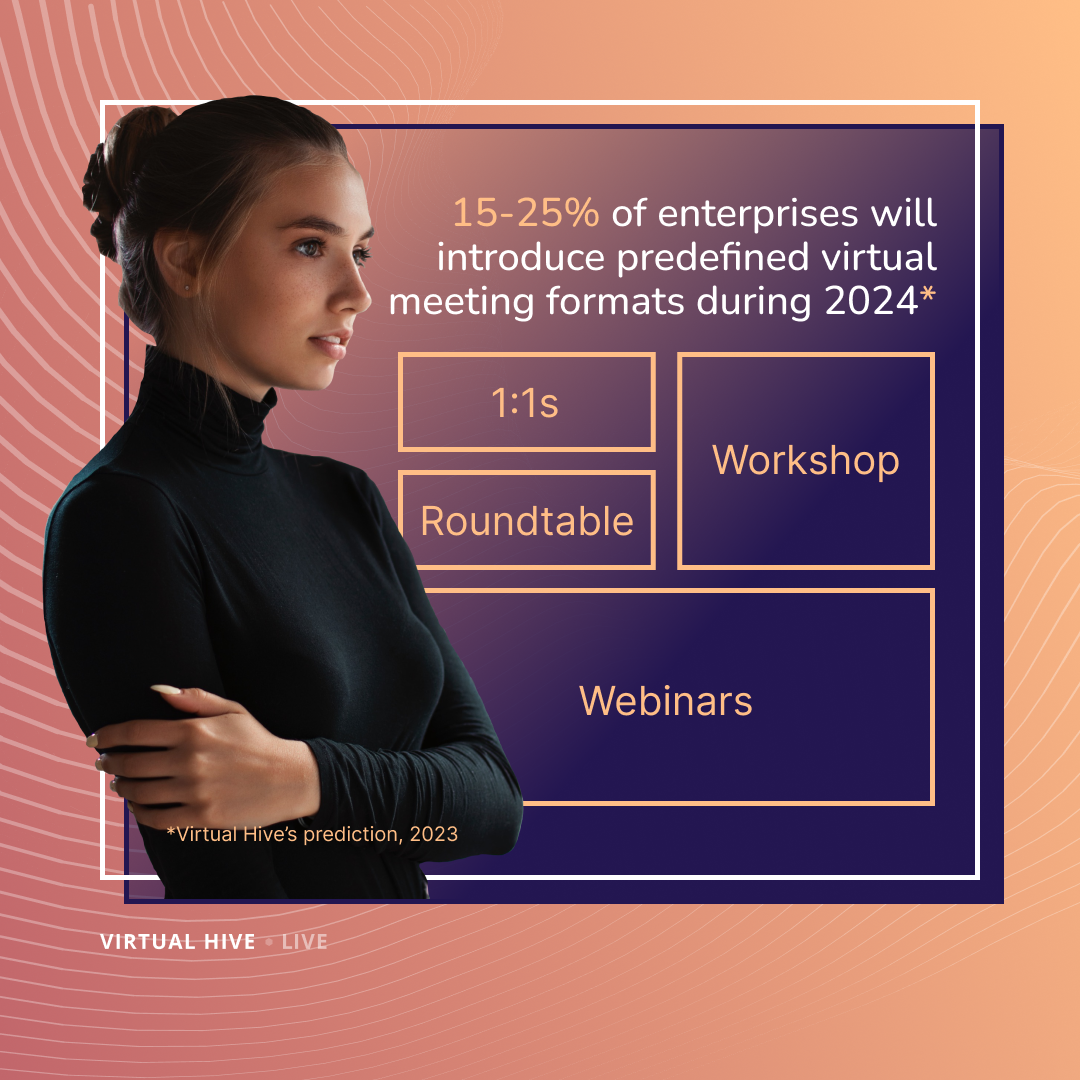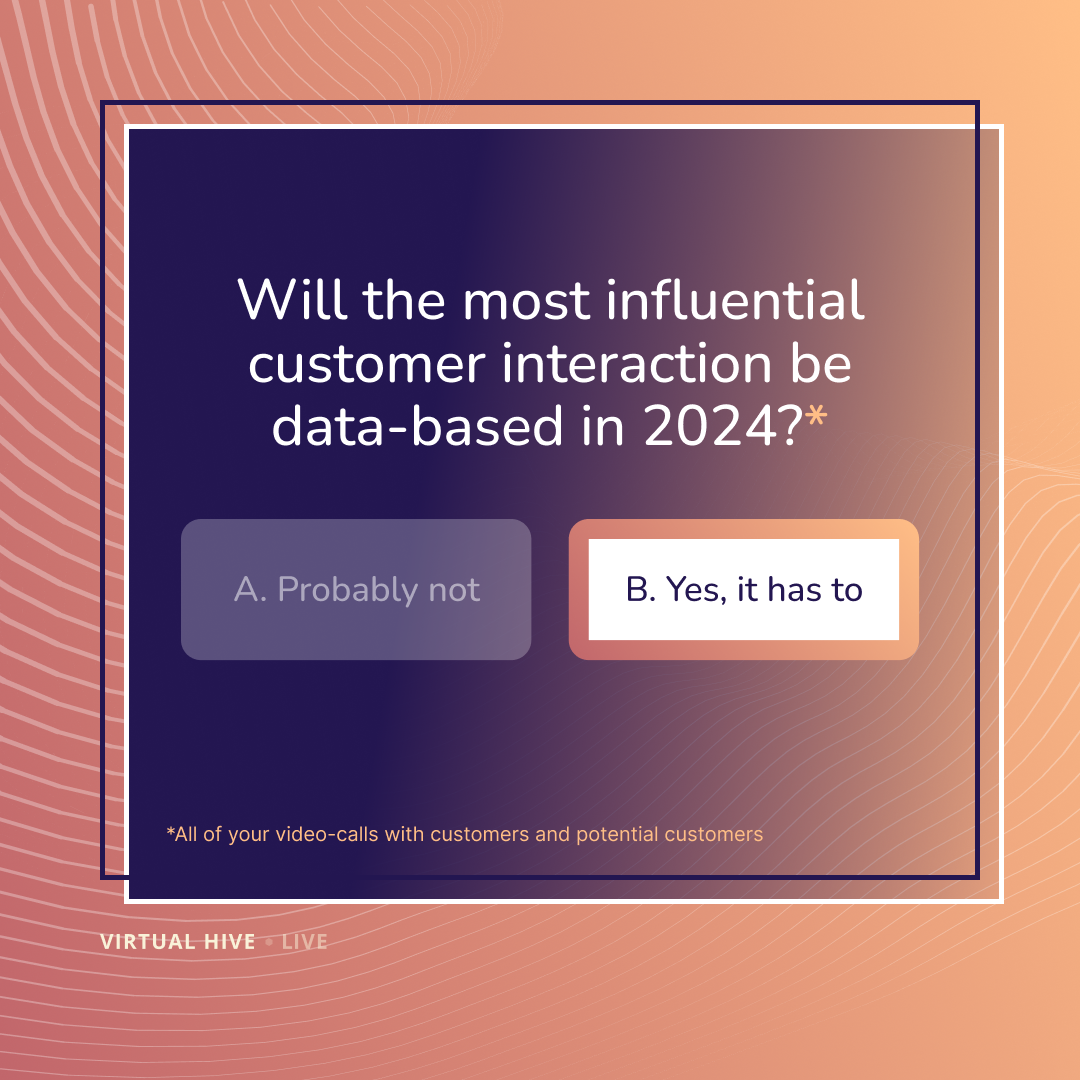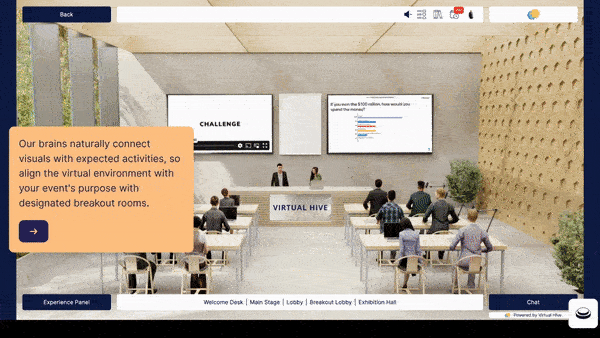6 Predictions of Virtual B2B Meetings in 2024

Background
Entering 2024, it is obvious that virtual business-to-business (B2B) meetings is evolving rapidly, driven by technological advancements and changing attendee expectations. The COVID-19 pandemic has accelerated this transformation, making virtual and hybrid events a common thing in the corporate world.
Envisioning the future of business meetings is much more than just reiterating the obvious trends of personalised experiences, diverse content, interactive sessions, and the like. It's sooooo easy to just claim 'Virtual B2B meetings will continue to champion sustainability, further minimising environmental impact through digital innovations' but honestly, who can take action on this?
Real insightful predictions go beyond the obvious. They're about spotting those hidden gems and new paths that we haven't fully explored or taken advantage of yet; the potential that today's landscape is just beginning to hint at. Here, we explore some key predictions for the future of virtual B2B meetings, referencing current trends and statistics.
1st Prediction ---
Meetings as a Strategic Communication Channel
From Logistical Necessity to Strategic Asset
- Current trend: The meeting mix is becoming more than a response to remote work.
- Why it's important: The meeting mix will be more sophisticated and an integral part of organisational communication strategies.
- Prediction: 50-75% of companies pursuing a new and revised 'meeting strategy' will first adopt this mechanism for their internal communication in order for them to be successful in their meetings with external stakeholders.
In 2024, the meeting mix is predicted to be more than a response to remote work or a pandemic-induced necessity. It will be a strategically leveraged channel, integral to how companies communicate with their key stakeholders, both internally and externally. The focus will be on creating branded, interactive, and inclusive experiences that are seamlessly integrated with the overall communication strategy of the organisation.
Businesses will increasingly view virtual meetings as integral to their strategic communication and branding efforts, akin to how they treat other professionalised communication channels like social media, websites, or email campaigns. This shift reflects the recognition of the unique opportunities virtual meetings can offer for brand reinforcement, stakeholder engagement, and message dissemination; both for internal and external communication.
This integration will see virtual meetings complementing other channels, such as social media for pre-event engagement and email follow-ups for post-meeting summaries and calls to action. In 70% of the cases, it will quite possibly be the responsibility of the CMOs to incorporate this into the overall channel mix whereas the remaining part will be put on the shoulders of CEOs and CHROs.
This shift involves moving away from viewing meetings as mere logistical arrangements and recognising them instead as key drivers of strategic engagement, branding, and knowledge sharing. Research suggests that embedding a new habit, such as this approach to meetings, typically takes about two months, even with the best communications and incentives. Therefore, incorporating meetings into the external channel mix needs to be a sustained effort, including some repetition. It is anticipated that a majority of companies, ranging between 50-75%, will first adopt this new 'meeting mechanism' for their internal communication. This includes 1:1s, team standups, and strategy sessions, to ensure their employees are effectively utilising this new opportunity. Ultimately, this approach aims to also introduce a cohesive and branded meeting experience to an external audience, such as in the company's customer support and sales meetings. During 2024, the first few thousand forward-thinking companies are expected to have successfully adopted this approach.
2nd Prediction ---
Synergising with Other Channels
Revamped User Experience for Enhanced Customer Loyalty
- Current trend: Virtual meetings are increasingly integrated with other communication channels such as CRMs, email, and marketing tools, and there is an increase in the interoperability of video platforms.
- Why it's important: Audiences no longer follow a straightforward path from awareness to loyalty, challenging traditional brand-building methods. A tighter integration enhance productivity and customer satisfaction.
- Prediction: By the end of 2024, 20-40% of the largest companies will deeply integrate live and on-demand virtual meetings and webinars with other channels, platforms, and traditional marketing.
As audiences no longer follow a straightforward path from awareness to loyalty, challenging traditional brand-building methods, brands must adapt their strategies to the evolving audience attitudes. Virtual meetings, when viewed as a part of a broader communication strategy, enhance the effectiveness and cohesiveness of business communications. This integration ensures that messaging is consistent and aligned across various channels, reinforcing the brand's identity and values. Integrating virtual meetings with other communication tools like emails, social media, and even other video conference platforms, creates a synergistic effect, maximising the impact of each interaction.
As an indication of the trend of interoperability of video platforms, major players like Microsoft, Cisco, and Zoom are already focusing on bridging the gaps between their respective video conferencing platforms. This initiative is largely driven by the increasing demand for a hybrid workplace environment where seamless switching between various video conferencing services is essential. The companies are exploring the adoption of a universal web-based standard, such as WebRTC, to facilitate this interoperability.
Key to success is creating catalytic brand experiences that change audience behaviour and attitudes, fostering deeper brand connections. These experiences - which, according to Gartner, has the greatest impact on brand commitment - can be integrated across various channels and have a lasting impact on brand loyalty. To develop impactful catalytic experiences companies must:
- Assess existing and planned brand interactions, e.g. knowledge sharing events, for catalytic potential.
- Look for naturally impactful moments, such as memorable or emotional experiences, for instance, live interactions during virtual meetings and webinars.
- Use customer insights, e.g. metrics like attendance, in-meeting interactions, and user behaviour from events and meetings, to refine and improve brand interactions.
This integrated approach is expected to redefine the way brands interact with their audiences. It's not just about reaching the audience but engaging them in a meaningful way that resonates across multiple platforms, thereby reinforcing the brand's identity and values. This strategic shift is likely to have a lasting impact on brand loyalty, making it a critical focus for companies aiming to thrive in the rapidly evolving business environment.
By integrating virtual meetings with other communication channels, companies can expect a significant increase in customer loyalty and satisfaction. This could translate to a 10-20% increase in customer retention rates by 2025 by the companies that adopt it comprehensively.
3rd Prediction ---
Pre-set, Diversified Meeting Formats
Revamp Branded Marketing for Enhanced Customer Loyalty
- Current trend: Companies are moving away from a one-size-fits-all approach to meetings.
- Why it's important: The diversity in meeting formats addresses different communication objectives effectively. Each meeting needs to serve its intended purpose efficiently.
- Prediction: At least 15-25% of enterprise companies will introduce predefined virtual meeting formats like roundtables for discussions, conferences for updates, expos for demos, and workshops for problem-solving. This approach will match meeting objectives with optimal formats, leading to more effective communication and improved team collaboration.
The choice of meeting format is becoming a strategic decision, aligned with specific communication objectives. This approach ensures that the format enhances the message's effectiveness. Recognising that one size does not fit all, companies will adopt a variety of predefined meeting formats. These could range from large-scale webinars for broad messaging to small, interactive sessions for deeper engagement.
Variety in Digital Meeting Formats
- Large-Scale Webinars: Ideal for broad messaging, announcements, or educational purposes. They cater to large audiences efficiently.
- Small Interactive Sessions: These are more suitable for deep dives, brainstorming, or detailed discussions. They foster a closer connection and higher engagement.
- Hybrid Meetings: Combining physical and virtual elements, these meetings cater to both remote and in-person participants.
Recognising the importance of active participation for effective communication, businesses will also employ tools like live polls, Q&A sessions, and interactive workshops. This approach will not only maintain attendee interest but also provide valuable feedback and insights into the effectiveness of the very meeting format used.
In conclusion, pre-set, diversified meeting formats represent a significant shift in how companies approach virtual meetings, offering a tailored experience that meets various objectives and audience needs. This change is not just about technology but also reflects a deeper understanding of effective communication in a digital age. 15-25% of enterprise companies will introduce predefined virtual meeting formats during 2024 like roundtables for discussions, conferences for updates, expos for demos, and workshops for problem-solving.

4th Prediction ---
Smaller, More Focused Meetings
Advancing Towards Compact and Focused Events and Meetings
- Current trend: A shift towards smaller, more targeted events is becoming more common.
- Why it's important: Smaller, more frequent meetings facilitate focused, meaningful engagement. According to Harvard Business Review, this is important as meetings with more than 6 attendees increases the risk of individual voices becoming lost.
- Prediction: Companies will start using their virtual video conference platform as an on-demand hub to facilitate more frequent and niche-focused meetings, both for internal and external stakeholders, allowing for deeper engagement on specific topics. Drop-in meetings will be more regularly used. By 2025, it is projected that around 65% of companies will shift towards a strategy that emphasises smaller, more focused virtual meetings.
There is an expected increase in smaller, more frequent events, focusing on engaging audiences throughout the year. This approach is not only more agile but also cost-effective, as it involves inviting more virtual attendees over live ones, reducing the need for larger venues and staff. This trend towards smaller, more frequent events can offer more targeted and personalised experiences to attendees while offering greater flexibility and accessibility-
According to a report by Globetrender and Accor, there is an anticipated growth in the size and number of meetings and events in 2024. A significant majority (78%) expect an increase in small and medium-sized meetings. This growth is backed by an increased focus on human connection and creating experiences that offer a return on experience (ROX).
Looking ahead, companies are expected to leverage their virtual conferencing platforms as dynamic hubs for on-demand, niche-focused meetings. This approach caters to both internal and external stakeholders, fostering deeper discussions on specific topics and encouraging the use of drop-in meetings for increased flexibility. It's anticipated that by 2025, about 65% of companies will adopt a model focusing on smaller, more frequent virtual meetings. This shift is expected due to the growing recognition of the effectiveness of concise and targeted interactions. The trend suggests a move away from traditional, large-scale meetings to more intimate, focused sessions that can happen more regularly, catering to specific topics or groups.
5th Prediction ---
Increased Use of Analytics
Leveraging data analytics, businesses will refine their meeting strategies to optimise engagement and impact. This approach will use attendee feedback, engagement metrics, and behavioural data to tailor meeting content, format, and timing to better meet the needs of participants.
- Trend: First-party data — data collected directly from customers or meeting participants — has become increasingly valuable.
- Why it's important: With the rise of Generative AI in search engines, predicted to reduce organic site traffic by 50% by 2028, businesses need to adapt their strategies. Focusing on direct and personalised communication channels, like virtual meetings and webinars, becomes essential in engaging stakeholders and generating leads as traditional SEO loses efficacy.
- Prediction: Analytics will be more deeply integrated into event planning and meeting execution, driving improvements in attendee experience and ROI. Primarily driven by the lack of actionable insights in their existing meeting solutions, large companies will explore ways to capture and quantify meeting data, ultimately with the goal of utilising their own proprietary AI in 2025-26.
By 2028, Generative AI's (GenAI) integration in search engines is expected to cut organic brand website traffic by over 50%. This marks a significant shift in consumer information-seeking habits, as many opt for AI-generated results over traditional searches. Brands, facing challenges in lead generation and revenue, must pivot their strategies. Key focuses should include honing in on conversion-centric keywords, utilising first-party data, creating gated content, and innovatively adapting traditional channels to meet new customer search behaviours.
First-party data, gathered directly from user interactions, is essential for understanding behaviours, preferences, and engagement, offering more reliability than third-party data for customising communication strategies. Companies use this data to enhance user experiences and inform communication and marketing decisions.
In video meeting platforms, analytics extend beyond data collection to interpret and derive actionable insights, aiding businesses in refining communication strategies, boosting collaboration, and improving productivity. By analysing meeting metrics such as duration, frequency, participation, and engagement, companies can pinpoint communication process improvements, optimise time management, and ensure productive, goal-focused meetings.
Furthermore, predictive analytics in meeting platforms enable businesses to foresee communication and collaboration trends. This proactive approach allows for timely adjustments in meeting structures and strategies, predicting engagement levels, optimal meeting times, and potential issues, thus preemptively addressing concerns to maintain productivity. Based on the previous discussion on integrating meetings with existing tech stacks, it's anticipated that 8 out of 10 companies are adopting this approach primarily due to the absence of actionable analytics in their current meeting solutions.
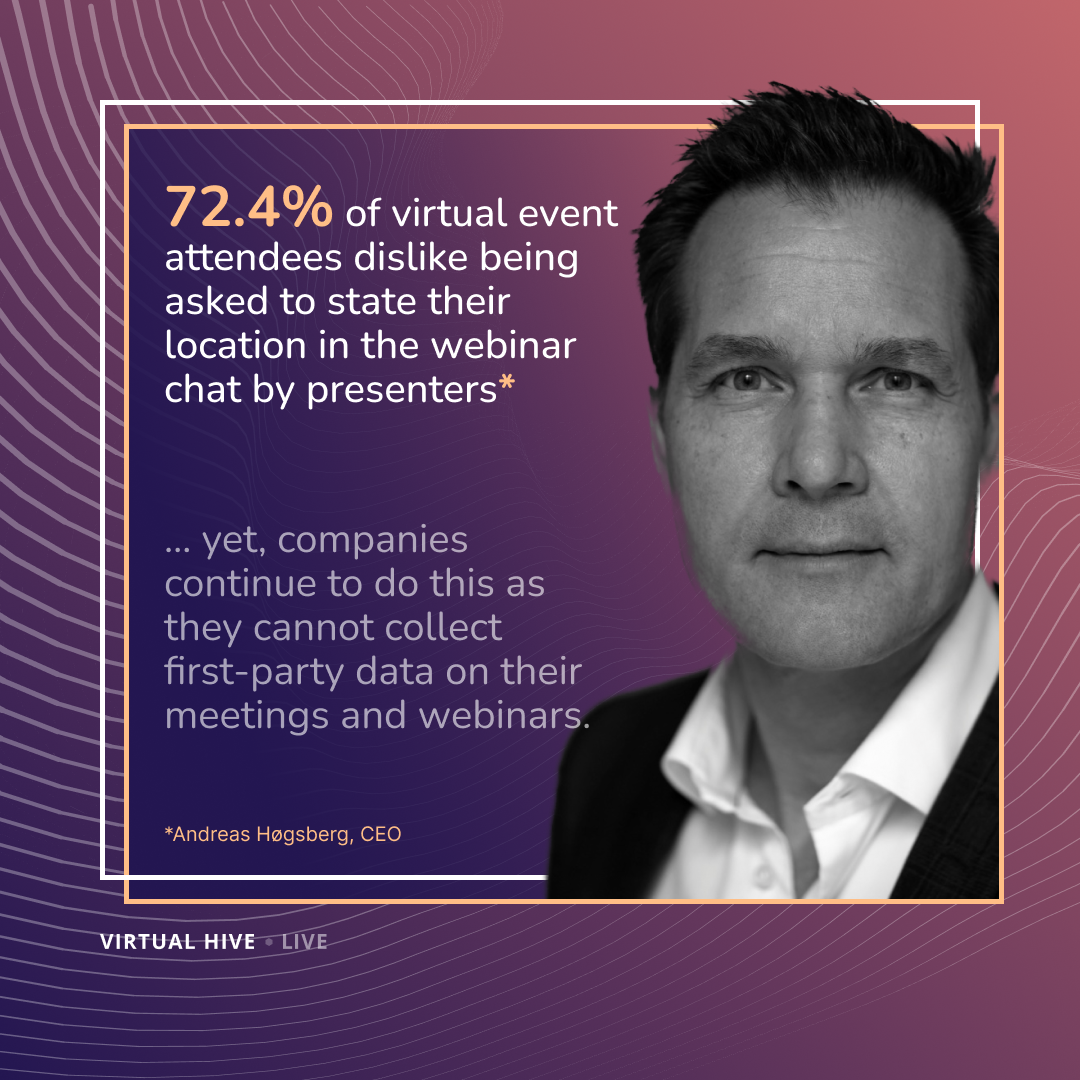
6th Prediction ---
Experiential Designed Networking Facilities
Enhanced Relevancy Through Topic-Focused Hubs
- Trend: Enhanced networking tools are increasingly important, especially in hybrid event and meeting formats.
- Why it's important: Creating memorable experiences through event and meeting design is a growing focus, incorporating storytelling and interactive elements.
- Prediction: Expect advancements in experiential networking technology and design, making it easier for virtual attendees to connect and engage with each other. It will play a crucial role in differentiating virtual events, with a greater emphasis on immersive and sensory experiences.
A significant trend is the development of topic-focused connection hubs. These hubs are specifically designed to foster meaningful interactions among attendees when they are participating virtually. By focusing on shared interests or professional fields, these experiential hubs ensure that networking opportunities are more aligned with the participants' goals and interests, enhancing the overall value of the interaction.
By 2025, it is anticipated that concerns over the quality of social media sites will lead to 50% of consumers significantly reducing their usage of these platforms. This trend is largely influenced by worries about the spread of misinformation, particularly through the use of Generative AI (GenAI) technologies on social channels. Over 70% of consumers are already apprehensive about AI's potential negative impact on social media, fearing it could exacerbate issues of misinformation. The integration of AI into many major social platforms has the potential to accelerate this perceived decline in quality. As a result, a significant portion of users are expected to actively curtail their engagement with these platforms.
But where will they go? How will they spend their time?
There is an opportunity to cater to a consumer segment that values authenticity and ethical practices. This trend suggests a market shift towards "acoustic" brands, which may attract premium or safety-focused markets by emphasising traditional, AI-free approaches.
Looking into the future, it's expected that networking facilities will undergo further evolution to meet the changing needs of attendees in virtual settings. The focus is likely to shift towards creating more immersive and interactive networking experiences. This evolution might include personalised networking opportunities that utilise data analytics to match attendees based on their interests or professional objectives, thereby making networking more targeted and relevant. Although dedicated virtual breakout rooms have been available for some time, it is projected that in 2024, the majority of companies will start to extensively utilise these features. Meanwhile, the most progressive companies, representing the top 10 percent, will begin to explore more experiential designs that emphasise their ethos and values.
My company, Virtual Hive, enhances your current videoconferencing solution by incorporating (or working towards) all of the aforementioned predictions for 2024. For instance, we have upgraded Teams & Zoom to elevate webinars, kickoffs, and town hall meetings with a branded universe. At the start of the new year, we will launch the world's first 100% virtual job centre for municipalities, aimed at helping the unemployed find jobs more quickly (it's designed specifically for Danish municipalities, hence the article's language).
If your company is in search of a platform for meeting experiences, or requires a bespoke, virtual event, or a constant content hub, please do not hesitate to reach out.
Thanks for reading.
